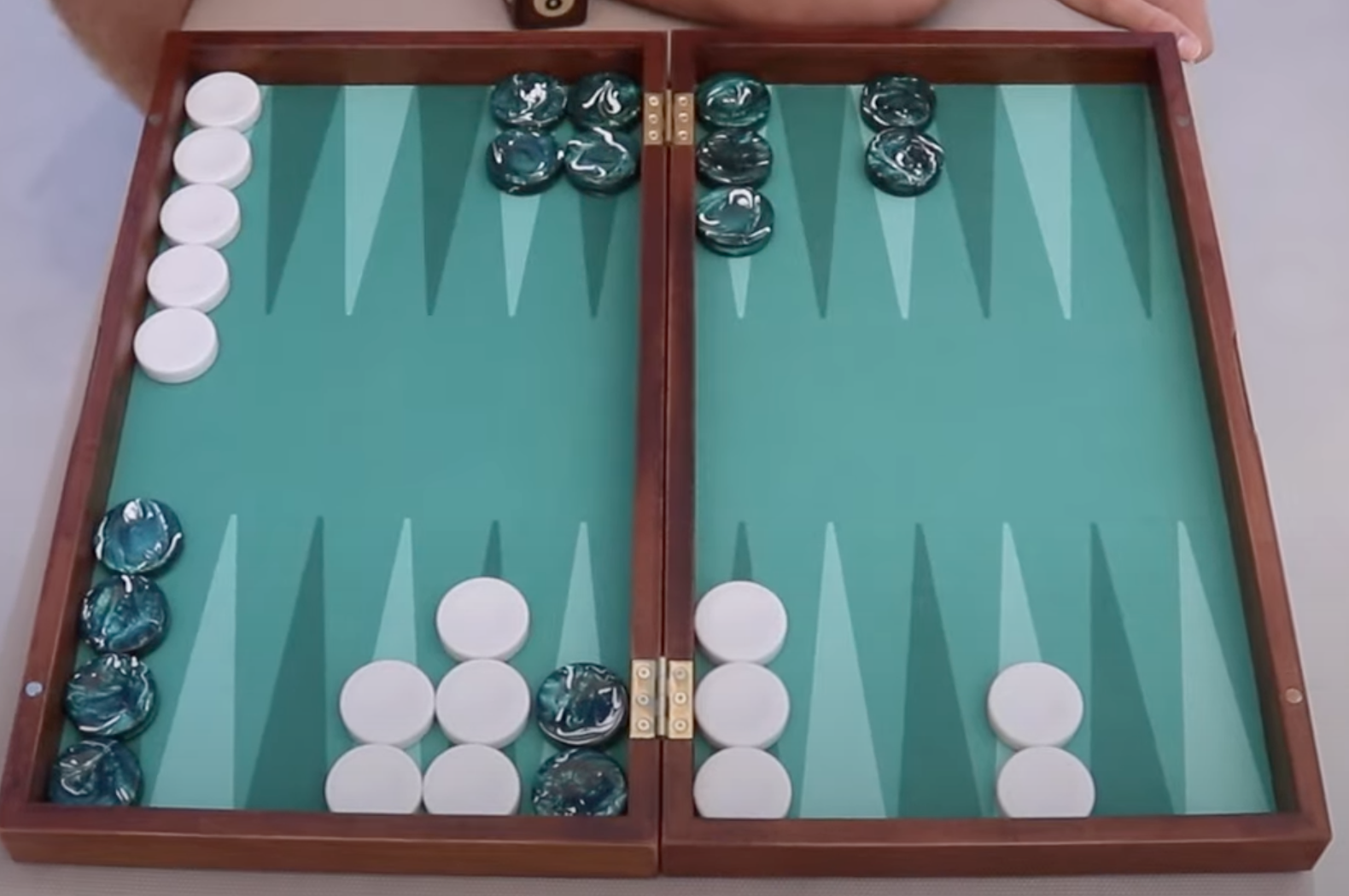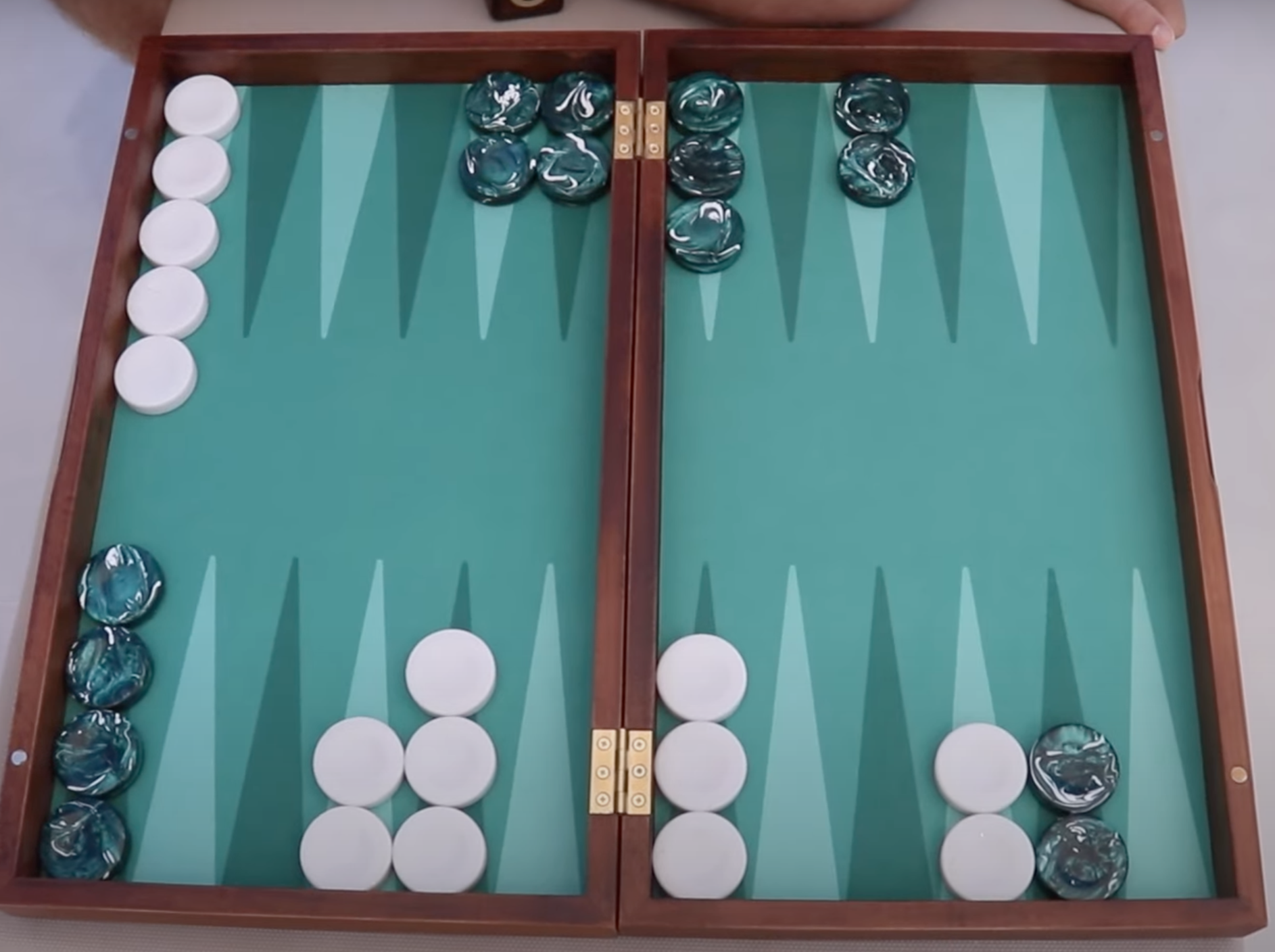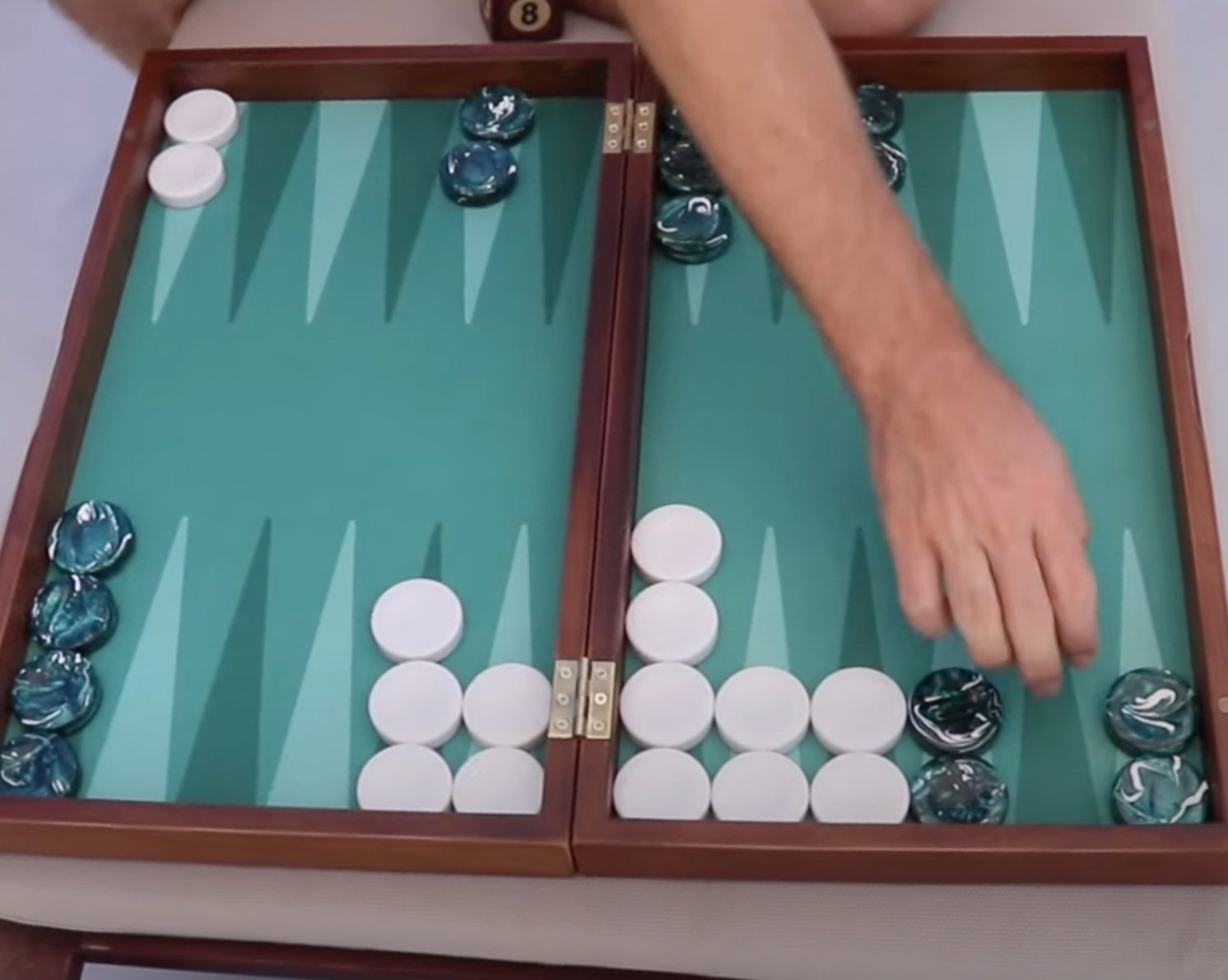Holding Games & Back Games - Play Them Like a Pro!
Hello dear reader! This is Marc Olsen from Backgammon Galaxy. In today’s blog post, you will learn about the difference between a holding game and a back game.
Holding Games
Firstly, let’s have a look at the opening position:
What happens in every single backgammon game is that at some point, one of the players successfully escapes his or her back checkers before the other player does. For instance, if we assume that White is in a position like this:
White, upon successfully escaping his back checkers
you can see that White has no back checkers. That is because he has no checkers in Green's front position, meaning, he has achieved full freedom. On the other hand, Green still has back checkers. In every single backgammon game, one player achieves full freedom before the other one.
For example, let's say that Green has an anchor on the 22 point, and also he has built a little bit of prime, which would lead to a holding game position like the one below:
We call it a holding game because Green is holding onto his anchor and holding White here, trying to turn the game around by hitting a turnaround shot. We can see that;
Green has no prime value because there are no back checkers to be primed.
He has no blitz value because there are no back checkers to be blitzed.
He's left with contact value.
Therefore, he can still win the game. It's even a take if White doubles. Even though Green may not win through priming, blitzing, or racing; he can win through contact, so he is still in the game. As long as you have a single point of contact, you still have a chance in the game of backgammon. You can get lucky and hit a shot and turn the game around, which is a holding game.
Different Variations of Holding Games
Holding game comes in many different variations. This position below would be the 22-point holding game (the position in the previous example, also presented below):
22-point holding game
It can also be basically named the holding game according to what point you have. The position below would be the 20-point holding game or as some call it, the five-point holding game:
20-point holding game
And below, you see an example of the bar point holding game:
Different Categories of Holding Games
1- Shallow Holding Games: This type of holding game occurs when you've managed to make an advanced anchor with your back checker. That would be on the 21 point, on the 20 point (which we call the golden point), or the 18 point (the powerpoint).
21-point holding game
20-point (golden point) holding game
18-point holding game
They're typically the stronger ones because they would still give you an opportunity to race as well. If you get lucky and roll a double five, you might catch up in the race.
So, in shallow holding games, you're not getting primed; therefore, you still have some racing chance.
2- Deep Holding Games: You’ll have a deep holding game when you have an anchor on the ace point or the deuce point, respectively:
They're usually not as strong as the shallow holding games because it's very difficult to catch up in the race in deep holding games. That is because you usually get the shots later on in the game.
For instance, let's imagine that White had all of his checkers moved into his home board:
In this case, you would prefer to have a deep holding game rather than a shallow one because you are late in the game, late in the bear-off phase. So here, it would better to have a deep holding game because you still have a chance to hit.
If you have a shallow anchor in a position like the one below, you don't have much contact value:
It's rather easy for White to just clear the last points here in front of the anchor.
3- Hybrid Holding Game: This type of holding game is sort of between a deep and a shallow holding game. The 22-point holding game is a great example for this type. It's neither deep nor shallow; it's something in between. We can say that it has a little bit of both worlds. You can still get lucky and catch up in the race from the 22 point, but you're also kind of getting primed because it's a little bit deep:
Back Games
A back game is essentially the same type of position as a holding game. It's also a contact position, but the difference is that you have two anchors made in a back game. So, a back game is actually a holding game with two anchors.
Different Categories of Back Games
1- Shallow Back Games: These are the back games where you have the five-point as one of the two anchors. For instance: the 5-4 back game, the 5-3, the 5-2, or the 5-1.
5-4 back game
5-3 back game
5-2 back game
5-1 back game
The shallow back games often play out as a holding game because even though you have a back game for the time being, later on you might just run with one of your checkers, and you still have a holding game with some extra contact. Or, you might run with both checkers, and then you would again have a holding game.
This means that in a shallow back game, you don't crunch as often, so it's more robust in terms of timing, but it's not quite as strong in terms of generating shots.
2- Mid-Range Back Games: Those games are the ones where you have the four points included, which would be the 1-4, the 2-4, or the 3-4.
1-4 back game
2-4 back game
3-4 back game
This type of back games generates a little bit more shots than the shallow one, but it's a little bit more risky because you're getting primed. So, you might end up crunching your front position, which is the worst thing that can happen.
3- Deep Back Games: Those are the back games where you essentially have the 1-3, the 2-3, or the 1-2 back game.
1-3 back game
2-3 back game
1-2 back game
If you have good timing, deep back games can actually be considered as the strongest type of back game.
Deep back games generate the shots quite late, so you should time your front position well, have a nice prime, and then when you get a shot (usually a double shot), then you can hit your opponent with the turnaround shot. Hopefully, if you manage to have a six prime by then, you can win the game that way. On the other hand, the deep back games are also risky because, as you can see in the 1-2 back game position, you're really getting primed with the four checkers deep.
Again, the timing is a crucial variable in that case. If you don't have proper timing, you're going to crunch your front position, and collapse, and then basically, you will lose a gammon or even a backgammon.
You can see the full video here!
























